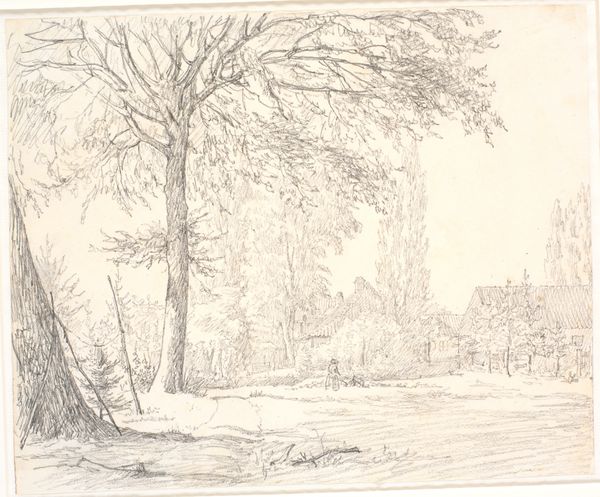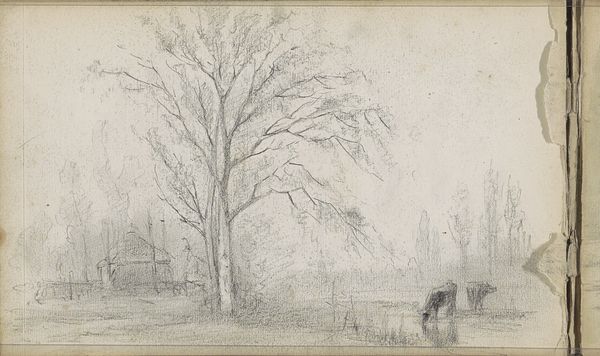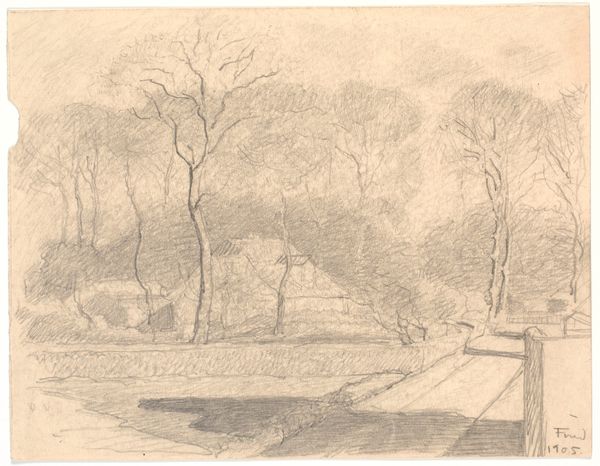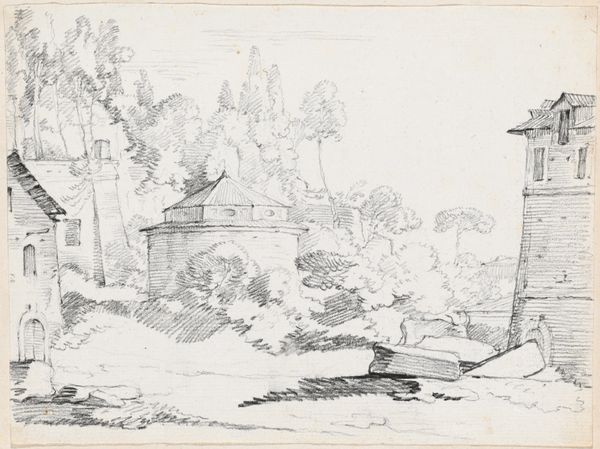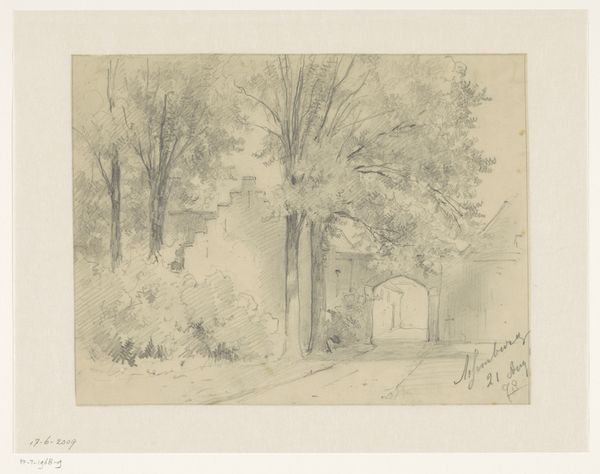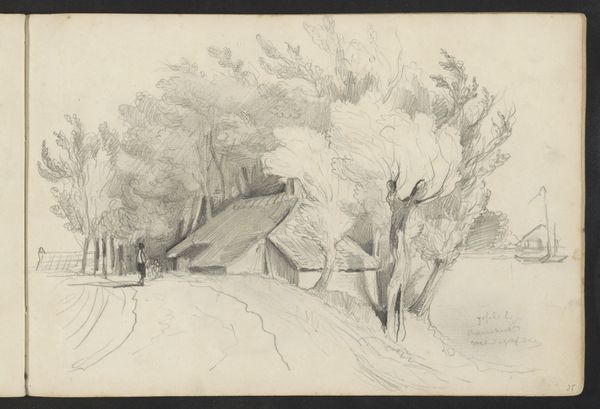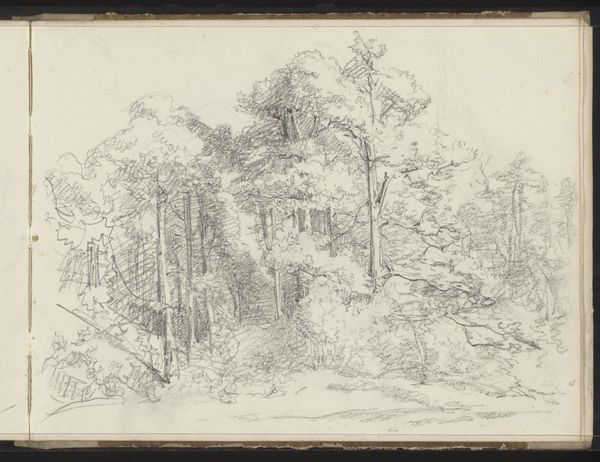
drawing, pencil
#
drawing
#
pencil sketch
#
landscape
#
pencil
#
park
#
cityscape
Copyright: Rijks Museum: Open Domain
Editor: So, here we have "Trees at the Entrance to a Park," a pencil drawing likely created sometime between 1865 and 1913. It depicts a park entrance, unsurprisingly! The overall effect is… hazy, almost dreamlike. What strikes you about this piece? Curator: The haziness you point out is interesting. Looking at this through a historical lens, I see a glimpse into the changing role of public parks. Do you think this drawing captures a sense of ordered nature for the emerging middle class? The drawing seems to place particular focus on controlled public spaces during rapid urbanization. Editor: I hadn't considered that! So, it's not just a pretty picture of trees; it’s also about social control and the development of urban planning. Is the very act of sketching the park part of a larger cultural phenomenon? Curator: Exactly. Pencil sketches like this became a tool for observing and documenting the changing urban landscape. And think about the artistic training – sketching en plein air, that is, outdoors – as a developing academic discipline in the 19th century. We can read this drawing as not only a depiction of a park, but also a product of the era's social and artistic institutions. Editor: It’s amazing how a simple drawing can reveal so much about the historical context! I suppose I saw it only as a pretty landscape. Curator: Well, I see it also as a pretty landscape, don't get me wrong! And remember, the reception of the art, what people value in it, evolves along with changes in cultural values, too. But how wonderful to be reminded that seeing the cultural backdrop opens it up to broader readings! Editor: That's a great way to put it. Now, I'll look at cityscapes completely differently! Thanks for pointing that out.
Comments
No comments
Be the first to comment and join the conversation on the ultimate creative platform.
